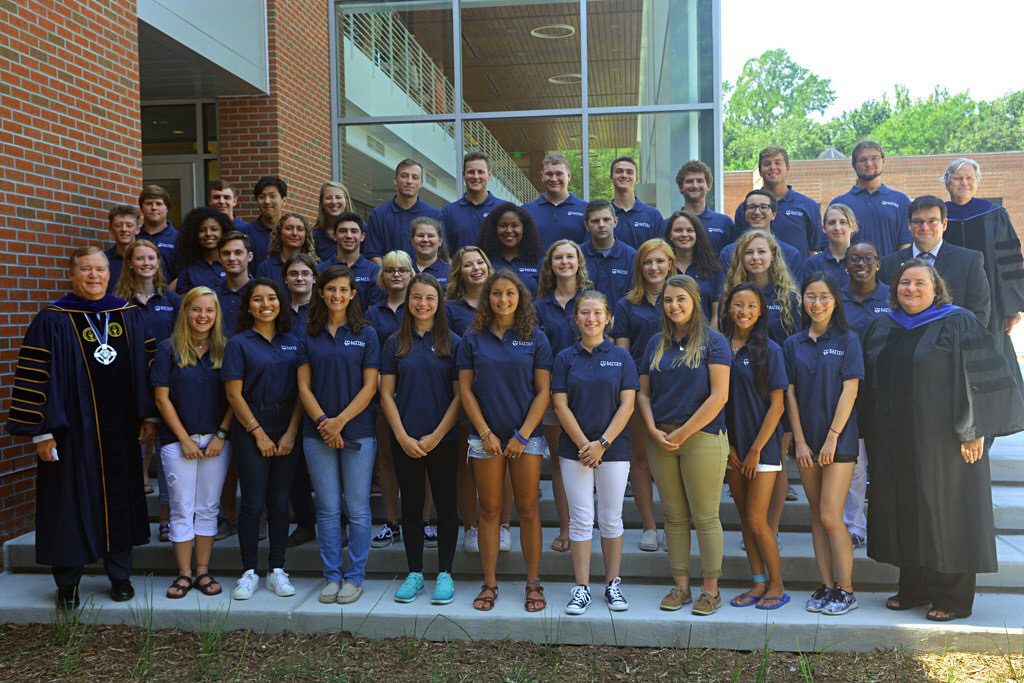On Sept. 20, 2017, VWU President Scott Miller released his daily nota bene, which presented the student body and staff with an annual employment diversity report. Listed in the report were two separate representations of the ethnicities for full and part-time employees along with the ethnicities for student employees and work-study employees on campus. However, no report was released that showed the ethnicity breakdown of just professors.
In a meeting with the enrollment office, President Miller released information that 6% of VWU professors are African-American, while 11% in general are non-white.
In the fall of 2016, the percentage of minority full-time faculty on campus was also 11%, according to a report released by the Office of Research and Policy Analysis. The percentage of minority professors has not increased or decreased from last year to the present.
Students on campus have definitely noticed the diversity among professors.
“I think our professors are not as diverse as they should be in my opinion, and that there could be a number of relevant factors for why it is low,” said Brandon Foster, a junior heavily involved in campus life.
“I believe that with such a high diversity amongst our students, we should parallel that with a more diverse faculty through which different lenses, no matter what discipline they teach in, may be conversed and understood having a varying faculty opinion that is unique to our institution,” Foster said.
“I initially noticed the lack of diversity among faculty (professor and academic authorities on campus) myself when I was a freshman,” said Shyail Owens, a junior who is a student ambassador and the Vice President of multiple clubs on campus.
“I get reminded of the racial demographics of our faculty more often than a normal student because I am an employee of the institution and students (even parents) of various minorities have come up to me on campus and occasionally when I am off campus wearing a school t-shirt more than once asking questions,” Owens said. The most common questions: What is like to be a minority at VWU? Does she feel safe as a black woman? Is she comfortable on campus?
For some students, these are important facts about the school they chose to further their education.
“It is vital for students to know the truth and trust the institution that they attend. I feel that the student opinion on this campus is not a “trusting” one concerning the higher influences. This is a vital time in our students lives because we are encouraged to stand up and fight for what we believe in,” Foster said.
The annual diversity report that sparked this investigation listed that 70.3% of Wesleyan’s staff are white, while fewer than 30% of them are minorities. The graph representing the ethnicity of the student employees differed minimally in that 66.9% were white, while less than 34% were minority. The representation of work-study employees varied dramatically, as 50% were white and the other 50% were minority.
With regards to diversity among just students on campus, the school website states that the minority population is around 48%, which is increasingly better than it has been in past years. Along with this number is an increasing amount of students from foreign countries such as Russia, Turkey, Colombia and multiple others.
“I get disappointed when I feel that just because one aspect of the school is flourishing,” Owens said. “I am also confused as a proud student and employee because I have never known our leaders to ever settle for mediocre presentation or performance in any aspect of Virginia Wesleyan.”
Owens also praised the ethnic diversity among the student body on campus and the progression Wesleyan has made as an institution.
“This type of growth is a phenomenal step in the right direction,” she said.
These statistics are not unusual.
A report from the Teachers Insurance and Annuity Association of America (TIAA) Institute in April 2016 stated that “while underrepresented minorities held 12.7% of faculty positions in 2013, up from 8.6% in 1993, they held only 10.2% of tenured positions.”
Others were more confused about the statistics and how diversity was measured.
“The Employment by Diversity Report that was sent out tried to shed light on our diversity but I feel it was unclear in certain aspects,” Foster said. He expressed concerns that the report wasn’t clear on how it counted students.
“It does not account for students who have work study and student worker positions which would make the diversities seem over-represented if a student has both jobs, like my situation. It also lumps part-time and full-time employees together, having a larger impact since it is not separated into each category,” he said.
Virginia Wesleyan was also previously reported as ranking 20th in ethnic diversity among national liberal arts colleges, according to U.S. News & World Report’s annual ‘best colleges’ list.
Amanda Archer
acarcher@vwu.edu

